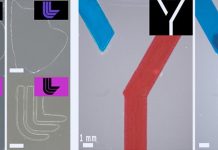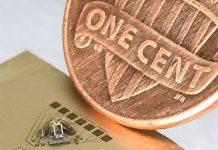
Long before modern photography, the idea of capturing images through a tiny hole fascinated early thinkers.
The ancient Chinese philosopher Mozi described the principle of pinhole imaging as early as the 4th century BC.
Unlike lens-based cameras, which can distort images and struggle with focus, pinhole cameras naturally avoid distortion and offer an almost infinite depth of field.
Now, researchers in China have reimagined this centuries-old idea to create a state-of-the-art infrared imaging system with remarkable potential.
A team from East China Normal University has developed a lens-free mid-infrared camera that can capture sharp, clear images across a wide range of distances and in very low light.
Their work, published in Optica, could lead to safer night-time imaging, improved industrial inspections, and more effective environmental monitoring.
The approach may also reduce the cost and complexity of infrared cameras, which are often noisy, bulky, and expensive.
“Many important signals are in the mid-infrared range, including heat signatures and molecular fingerprints,” explained research leader Heping Zeng. “But existing cameras for this range usually need cooling or complex optics. Our lens-free method provides high sensitivity with a much larger field of view and depth of field than traditional systems.”
The researchers created what they call an “optical pinhole” inside a nonlinear crystal using intense laser light. This crystal not only acts as a pinhole but also converts invisible infrared images into visible light.
That means a standard silicon-based camera—the same type used in everyday devices—can record the images.
By using a specially engineered crystal with a chirped-period structure, they allowed light rays from many different angles to pass through, achieving a wide field of view. The system also naturally reduces noise, making it effective even when there are only a few photons of light available.
Experiments showed that the setup could produce sharp images of targets placed 11, 15, and 19 centimeters away, all at the mid-infrared wavelength of 3.07 micrometers. Remarkably, the images remained clear even for objects placed up to 35 centimeters away, demonstrating the system’s unusually large depth of field.
The team also tested the system’s ability to capture 3D images. In one experiment, they used ultrafast laser pulses as an optical “time gate” to reconstruct the 3D shape of a ceramic rabbit with micron-level precision.
Even when the input light was reduced to simulate extremely low-light conditions, the system still produced usable images after applying noise-reduction techniques. In another test, they demonstrated 3D imaging by comparing two snapshots of an object taken from slightly different distances, allowing them to calculate true depth without complex timing methods.
While the current version of the system relies on a relatively large and sophisticated laser setup, the researchers are optimistic about its future.
As new nonlinear materials and compact laser sources are developed, they believe the camera can become more portable and practical. They are already working to make the system faster, more adaptable, and capable of covering an even wider range of infrared wavelengths.
“Lensless nonlinear pinhole imaging is a practical way to achieve distortion-free, wide-field, mid-infrared imaging with high sensitivity,” said team member Kun Huang.
“With further development, it could make powerful infrared cameras more affordable and accessible for many real-world uses.”
By combining ancient wisdom with modern optical science, the researchers have breathed new life into the humble pinhole camera—transforming it into a tool that may shape the future of imaging across medicine, industry, and safety.



